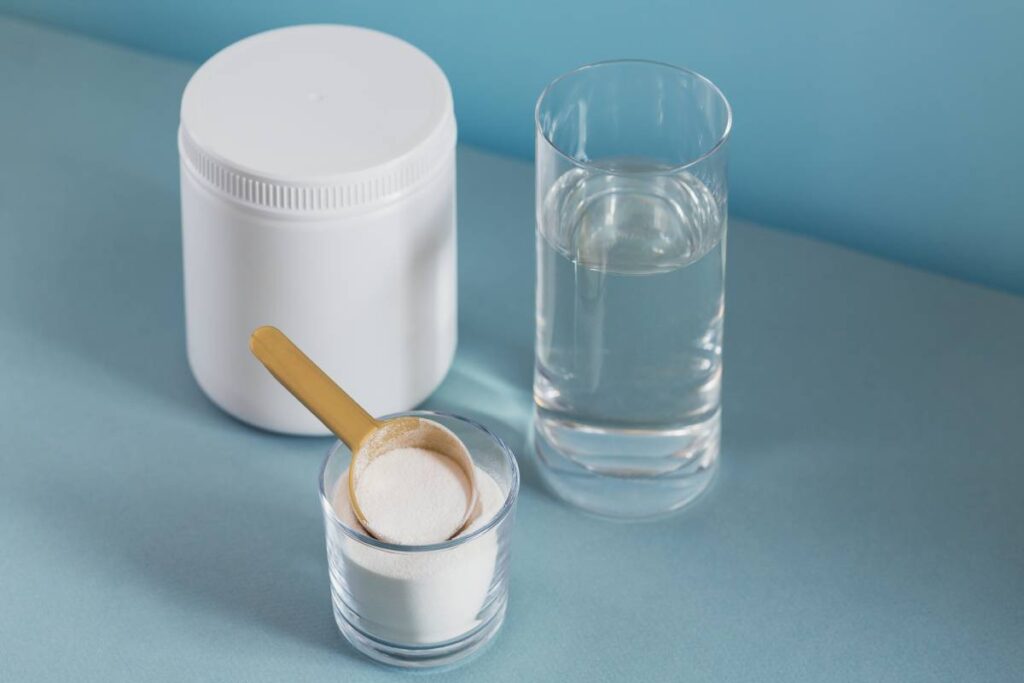Rainwater harvesting offers a sustainable solution to water scarcity, allowing households to collect and utilize rainwater for various purposes. However, ensuring the quality of harvested rainwater is essential to its usability and safety.
One of the key challenges in rainwater harvesting is preventing stagnation, which can lead to water contamination and reduced quality. In this guide, we will explore effective methods to keep rainwater fresh and usable by preventing stagnation.
From proper maintenance routines to innovative solutions, we’ll discuss practical strategies to maintain the cleanliness and quality of collected rainwater.
How to calculate the right size water tank for your home?
Water tanks are a smart addition to any home, offering a reliable source of water for various needs, from drinking to irrigation. But finding the right size can be a bit tricky. Here’s a simplified guide to help you calculate the perfect-sized water tank for your home.

- Assess Your Water Needs: Start by determining how much water your household consumes daily. Consider factors like the number of people in your household, typical water usage habits, and any special requirements like gardening or livestock.
- Calculate Daily Water Usage: On average, each person uses about 80-100 gallons of water per day for basic needs like drinking, cooking, bathing, and cleaning. Multiply this figure by the number of people in your household to get your daily water usage.
- Estimate Storage Duration: Decide how many days of water storage you want. This could range from a few days to weeks, depending on your location and potential water scarcity issues.
- Do the Math: Multiply your daily water usage by the number of days you want to store water. This gives you the total water storage needed for your household.
- Consider Additional Factors: Think about factors like rainfall patterns, drought frequency, and water delivery reliability in your area. These can influence your decision on tank size.
- Factor in Rainwater Harvesting: If you plan to harvest rainwater, consider the average annual rainfall in your area. This can supplement your water storage and reduce the required tank size.
- Account for Space Constraints: Determine where you’ll place the water tank and measure the available space. Ensure the tank size you choose fits comfortably in that space.
- Choose the Right Tank Type: There are various types of water tanks available, including polyethylene, fibreglass, concrete, and steel. Each has its pros and cons in terms of durability, cost, and maintenance requirements. Pick one that suits your needs and budget.
- Consult with Experts: If you’re unsure about any aspect of sizing your water tank, don’t hesitate to seek advice from professionals. They can provide personalized recommendations based on your specific requirements and local conditions.
- Regular Maintenance: Keep in mind that proper maintenance is crucial for the longevity and efficiency of your water tank. Schedule regular inspections and cleanings to prevent issues like contamination and sediment buildup.
What can I put in my water tank to keep water clean?
Regularly monitoring the quality and cleanliness of water stored in tanks is crucial, especially when it’s meant for human use. Several factors can lead to stored water becoming unsanitary, with the quality of the source water being a significant factor.
For water sourced from private wells and stored in tank reservoirs, ensuring the cleanliness of the well itself is paramount. Resources like the New Mexico Cooperative Extension Guide M-115 provide valuable guidance on disinfecting domestic wells, while the New Mexico FarmASyst publication offers additional insights into safeguarding wellheads.

When proper disinfection and wellhead protection measures are in place, stored water in tanks should remain relatively clean, requiring disinfection only as needed. It’s essential to maintain the integrity of tank openings, fittings, and potential points of contamination. Regularly cleaning the tank’s interior, ideally at least once a year, is advisable. Pressurized spray heads or rotary jet heads can effectively clean tanks with limited access. If access permits, scrubbing tank walls with mild detergent can yield excellent results.
Even with periodic outflow/inflow cycles, contaminants may persist, affecting the quality of stored water. Treating stored water with standard household bleach is a common method to maintain its quality.
Chlorine Concentration
The goal of this procedure is to achieve a chlorine concentration of about 1 part per million (ppm), which is commonly recommended for private water systems. This level of chlorine allows treated water to be used continuously for household purposes. It’s important to note that this method is not intended for shock chlorination, which requires much higher concentrations, around 200 ppm, and may involve draining the treated water to remove excess chlorine. By following this procedure, you can avoid excessive use of chlorine and prevent wasting valuable stored water.
Sanitizing Procedure
To begin, fill a clean quart container halfway with water. Add 1 to 1 1/2 fluid ounces (equivalent to 2-3 tablespoons) of standard unscented, non-detergent household chlorine bleach (with a concentration of 5.25%) for every 500 gallons of water to be treated. Pour this bleach solution directly into the storage tank. Use a clean pole or paddle to stir or mix the bleach solution thoroughly throughout the tank. A few minutes of mixing should be sufficient.
For example, if you need to treat 1,700 gallons of water at a rate of 1 1/4 fluid ounces per 500 gallons: 1,700 gallons × 1.25 fluid ounces/500 gallons = 4.25 fluid ounces of chlorine bleach
Once the bleach solution is distributed evenly, close the tank lid and all other openings. Allow the treatment to sit for a minimum of eight hours after stirring before using the water. If stirring within the tank is not feasible, let the treatment stand for 24 hours.
It’s essential to note that this chlorine concentration is effective for treating fresh, relatively clear water. It may not be as effective for water that is murky, cloudy, or contains a high concentration of suspended solids. In such cases, alternative treatment methods, such as shock chlorination, may be necessary. For personalized recommendations, contact your county Extension agent.

How do you keep rainwater from stagnating?
Rainwater harvesting is a sustainable way to collect and utilize water for various purposes, but stagnant water can pose health risks and reduce its usability. Here’s how to keep rainwater from stagnating:
- Design Proper Drainage Systems: Ensure your rainwater harvesting system includes proper drainage to prevent water from pooling or stagnating. Use gutters, downspouts, and sloped surfaces to direct water away from collection areas.
- Regular Maintenance: Establish a routine maintenance schedule to inspect and clean your rainwater collection system. Remove debris, leaves, and other obstructions from gutters, screens, and storage tanks to prevent blockages and stagnant water buildup.
- Utilize First Flush Diverters: Install first flush diverters in your rainwater collection system to divert the initial runoff, which may contain debris and pollutants, away from the storage tank. This helps improve water quality and reduces the risk of stagnation.
- Keep Storage Tanks Covered: Ensure that your rainwater storage tanks are securely covered to prevent sunlight exposure, which can promote algae growth and lead to water stagnation. Use opaque or UV-resistant covers to block sunlight and maintain water quality.
- Install Overflow and Ventilation Systems: Install overflow pipes and ventilation systems in your rainwater storage tanks to allow excess water to escape and promote air circulation. Stagnant water can attract mosquitoes and other pests, so proper ventilation is essential for preventing stagnation.
- Use Agitation Devices: Consider installing agitation devices, such as floating aerators or circulation pumps, in your rainwater storage tanks to keep the water moving and prevent stagnation. These devices help distribute oxygen and discourage the growth of algae and bacteria.
- Regularly Use and Rotate Stored Water: Avoid letting water sit stagnant in your storage tanks for extended periods. Use stored rainwater regularly for watering plants, flushing toilets, or other non-potable uses, and periodically rotate the water to prevent stagnation.
- Treat with Safe Disinfectants: If necessary, treat collected rainwater with safe disinfectants, such as chlorine or hydrogen peroxide, to prevent bacterial growth and ensure water quality. Follow recommended dosage instructions and safety precautions when using disinfectants.
- Monitor Water Quality: Regularly monitor the quality of stored rainwater using test kits or by observing any changes in odour, taste, or appearance. Address any issues promptly to prevent contamination and ensure safe water usage.
- Seek Professional Advice: If you’re unsure about maintaining the quality of your rainwater collection system or preventing stagnation, consider consulting with a professional rainwater harvesting specialist. They can provide expert guidance and assistance tailored to your specific needs.
What is stagnating?
Stagnating refers to the state of being stagnant, which means not flowing or moving. In the context of water, stagnation occurs when water remains still or doesn’t circulate, leading to the buildup of pollutants, debris, and potentially harmful microorganisms. Stagnant water can become a breeding ground for bacteria, algae, and mosquitoes, posing health risks and reducing water quality. Preventing stagnation is important to maintain the freshness and usability of water, whether it’s in natural bodies of water, water tanks, or rainwater harvesting systems.
In conclusion
Maintaining the freshness and usability of rainwater is crucial for maximizing its benefits in water conservation and sustainability efforts.
Whether for gardening, household use, or other non-potable purposes, clean rainwater provides a valuable resource that contributes to a more sustainable and eco-friendly lifestyle. With careful attention to maintenance and prevention measures, rainwater harvesting can continue to be a reliable and environmentally responsible water source for years to come.

















